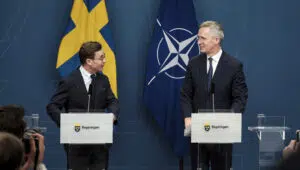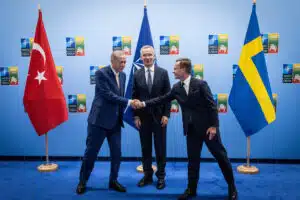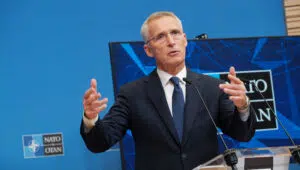Brussels – After nearly two years of waiting, the accession process is officially over. As of today (March 7), Sweden joins NATO “with an equal say in shaping NATO policies and decisions.” The announcement came from the secretary general of the North Atlantic Treaty Organization, Jens Stoltenberg, emphasizing “the historic day” for Stockholm and the Alliance as a whole: “It will now take its rightful place at NATO’s table.”

Stoltenberg thus welcomed the 32nd member country of the Atlantic Alliance, less than a year after the last entry, Finland’s, on April 4, 2023. “After over 200 years of non-alignment, Sweden now enjoys the protection granted by Article 5, the ultimate guarantee for the Allies’ freedom and security,” recalled Secretary General Stoltenberg, who welcomes “capable armed forces and a first-class defence industry.” Without sparing a jab at Russia on the issue of Ukraine’s (and others’) free choice to join the Alliance in the future: “Today’s membership demonstrates that NATO’s door remains open and that every nation has the right to choose its own path.”
All that is awaited at this point is the flag-raising ceremony next Monday (March 11), when the Swedish flag will be hoisted along with those of the other 31 allies at NATO headquarters in Brussels and all commands in Europe and North America. “Thank you to all the allies for welcoming us as the 32nd member,” commented Swedish Prime Minister Ulf Kristersson after meeting in Washington with U.S. Secretary of State Antony Blinken: “We will strive for unity, solidarity and burden-sharing and fully adhere to the values of the Washington Treaty,” namely “freedom, democracy, individual liberty and the rule of law.”

From left: Turkey’s President Recep Tayyip Erdoǧan, NATO Secretary General Jens Stoltenberg, and Sweden’s Prime Minister Ulf Kristersson at the Vilnius summit (July 10, 2023)
Sweden’s accession protocol (along with Finland) on July 5, 2022—after the strategic historic turn of the national security policy traditionally linked to non-alignment—and since then, it has been an uphill road for Stockholm. More than 19 months after the Madrid summit, Hungary had remained earlier this year the only member country not to have formally approved Stockholm’s entry into the Atlantic Alliance, when Turkey had also ended its tough blockade. A month and a half ago, the Hungarian premier, Viktor Orbán, had formally dropped his short obstructionism, but his Fidesz party did not, boycotting the extraordinary session earlier this month. Finding himself under pressure from the other members—and cornered by Kristersson’s visit—the Hungarian premier finally pushed his party members to drop the resistance. The go-ahead from Budapest finally came last Feb. 26, after the meeting in the Hungarian capital between Prime Ministers Orbán and Kristersson to discuss defence and security cooperation.
How to join NATO
To become a member of NATO, a country must send a formal application previously approved by its national parliament. This opens two stages of discussions with the Alliance, which do not necessarily pave the way for membership: the first, the “Intensified Dialogue”, delves into the country’s rationale for applying; the second, the “Membership Action Plan”, prepares the potential candidate to meet the necessary political, economic, military and legal requirements (democratic system, market economy, respect for the rule of law and fundamental rights, standards of intelligence and contribution to military operations, aptitude for peaceful conflict resolution). This second round of discussions was introduced in 1999 after the accession of Poland, Hungary, and the Czech Republic, to address the process with would-be members with political systems other than those of the Alliance’s founding countries, such as the former Soviet countries.

Il segretario generale della Nato, Jens Stoltenberg
The accession procedure formally begins with the application of Article 10 of the North Atlantic Treaty, which provides that “The Parties may, by unanimous agreement, invite any other European State
in a position to further the principles of this Treaty and to
contribute to the security of the North Atlantic area to accede to this
Treaty.” The resolution must be voted on unanimously by all member countries. At this point, the accession talks open at headquarters in Brussels to confirm the candidate’s willingness and ability to meet the obligations of membership: political and military issues first, security and economic issues second. After the accession talks, which are in effect a phase of negotiations, the candidate country’s foreign minister sends a letter of intent to the Alliance Secretary General.
The accession process ends with the Protocol of Accession, which is prepared by an amendment to the Washington Treaty, the founding text of the Alliance. This Protocol must be ratified by all members, with procedures varying by country: in Italy, the vote of the Parliament in a joint session is required to authorize the President of the Republic to ratify the international treaty. Once the Accession Protocol has been amended, the NATO Secretary General formally invites the candidate country to join the Alliance, and the agreement is deposited at the U.S. State Department headquarters in Washington. At the end of this process, the candidate is officially a member of the North Atlantic Treaty Organization.
English version by the Translation Service of Withub





